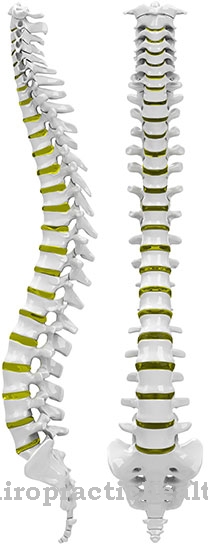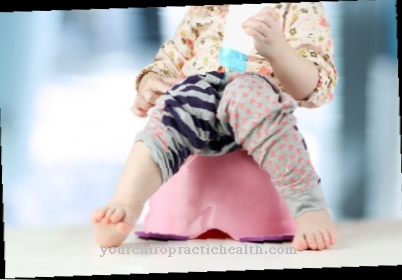Selenosis are symptoms of intoxication that are triggered by an increased intake of the trace element selenium. Medicines, food supplements or selenium-contaminated water can lead to too high a selenium concentration. The therapy usually corresponds to symptomatic treatment.
What is selenosis

© artemidovna - stock.adobe.com
The Selenosis is poisoning with selenium. The selenium content in whole blood is usually between 73 and 169. In the case of selenium poisoning, the value exceeds the limit of 169 units. The opposite is called selenium deficiency and consequently corresponds to falling below the specified standard values. Selenium is a trace element that the body needs in small quantities as a building block for proteins, in the immune system, for cell protection and to activate various hormones.
Between around 10 and 20 milligrams of selenium are stored in an adult's body. A large part of it is stored in the kidneys, liver, muscles and skeleton. The daily selenium requirement for an adult is probably around 0.03 to 0.07 milligrams. This recommended daily dose is usually covered by a balanced diet. Dietary supplementation with the trace element therefore often leads to selenosis. There is selenosis as acute and chronic poisoning.
causes
Selenosis can occur through excessive consumption of products containing selenium and the inhalation of selenium dust. Acute poisoning is caused by consuming three to seven milligrams of selenium in a single day. If there is chronic poisoning, these symptoms are usually related to a long-term daily dose of over 0.6 milligrams. In addition to dietary supplements containing selenium, tablets and medication containing selenium are among the most common causes.
Even the regular inhalation of large amounts of selenium can cause poisoning in the long run. Since selenium is stored, occasionally minor, but regularly occurring excesses of the daily dose have the effect of poisoning. Selenium poisoning through food is rather rare and only affects food with more than two µg selenium per gram. Poisoning by drinking water only affects areas with polluted water that contains more than ten µg selenium per liter.
Symptoms, ailments & signs
Selenium poisoning tends to have unspecific early symptoms. For example, nausea occurs, which can be accompanied by diarrhea or vomiting. The stool consistency changes to a watery quality. Because of the high water losses, dehydration can occur. In the course of dehydration, a feeling of weakness develops.
Selenium poisoning is often also noticeable in symptoms of the musculoskeletal system. Muscle weakness and muscle pain, for example, are common symptoms. General tiredness can also occur in the context of selenosis. Neurological symptoms appear in the course. For example, neuropathy of the peripheral nervous system can develop, which manifests itself in sensory disorders.
In connection with the central nervous system, changes in taste or vision can occur. At a late stage, those affected often lose their toenails and fingernails. Hair can also fall out. In addition, dermatological complaints such as skin rashes appear as late symptoms.
Diagnosis & course of disease
If selenosis is suspected, the doctor will determine the selenium content in the serum. Values over 169 are considered to be diagnostic. The anamnesis gives him clues about the possible causes of the poisoning. The prognosis for selenium poisoning is usually favorable. Lethal poisoning with selenium can occur due to the risk of heart failure and pulmonary edema, but occurs only rarely in Europe and requires the recommended daily dose to be significantly exceeded.
Selenium poisoning to a certain extent can at least damage the heart and especially the liver. In addition, selenium in large quantities can presumably cause malignant cancer and impair lung function.
Complications
The complications and symptoms of selenosis depend very much on the amount of selenium supplied. Serious poisoning does not always occur, so that treatment is not necessary in every case. As a rule, patients suffer from nausea and vomiting.
Furthermore, there is diarrhea and thus water loss. If the water loss is not made up, the affected person will suffer from dehydration. In the further course, the selenosis leads to severe pain in the muscles and also to cramps. The patients appear tired and exhausted and no longer take an active part in everyday life. Symptoms of paralysis or other sensory disorders can also occur due to selenosis and have a very negative effect on the patient's everyday life.
If selenosis is left untreated, it can lead to vision problems or hair loss. Treatment of selenosis can only be carried out in the form of foregoing the element. There are no complications. The individual complaints can usually be treated symptomatically. In most cases, the course of the disease is always positive.
When should you go to the doctor?
Since selenosis is a serious poisoning, it should always be treated by a doctor immediately. In the worst case, the affected person can die if the selenosis is not treated at all or is treated late by a doctor. The earlier the selenosis is recognized and treated, the better the further course of this disease is usually. A doctor should be consulted if the person concerned has consumed a high amount of selenium. The patients usually suffer from severe nausea or severe diarrhea and vomiting. Furthermore, there is a high loss of water and thus also dehydration.
If these symptoms occur, a doctor must be consulted immediately. With a higher amount of selenium, there will also be muscle weakness and in some cases disturbances of sensation or taste. If these occur after taking selenium, the hospital usually has to be visited. Selenosis can be treated by a general practitioner or an emergency doctor, depending on the amount taken.The selenosis may also reduce the life expectancy of the person affected.
Treatment & Therapy
There is no causal therapy for selenosis. Antidotes for inactivating the substance are not known. The removal of selenium from the body is also usually out of the question. The treatment consists largely of renouncing the further intake of the trace element. The respective symptoms of selenosis are treated individually and depending on the case. In the case of dehydration, for example, the water balance in the organism must be artificially restored.
In this context, hydration is a crucial step in therapy. This supply can be intravenous if the patient has a tendency to vomit. This restoration of the water balance ensures that the patient excretes the excess selenium as quickly as possible. Breathing difficulties caused by selenosis are usually treated with medication. The patient is less frequently ventilated with oxygen.
Pain reliever medication is given to treat muscle discomfort. If the nervous system has been damaged by selenosis, physiotherapeutic measures may be necessary. If organ damage occurs, an insufficiency of the corresponding organ can occur, which must be combated separately and in rare cases makes a transplant necessary. Patients have to eat consistently low in selenium so that there is no further selenosis in the future.
prevention
Selenosis can be prevented through a diet that is low in selenium and by avoiding dietary supplements containing selenium, as well as medication and inhalation cures. In areas exposed to selenium, drinking water is a possible cause of selenosis. Therefore, in such areas, not consuming tap water can be a preventive measure.
Aftercare
Selenosis requires intensive follow-up treatment, since secondary diseases or the recurrence of selenosis cannot otherwise be ruled out. Most important are regular blood tests with measurements of selenium and other nutrient levels. If the selenium levels are too high again, a low selenium diet must be adhered to. This consists of avoiding rice, salmon, asparagus, mushrooms, Brazil nuts and red cabbage.
As soon as normal selenium levels are measured again, however, a switch to a normal diet should take place, as otherwise a selenium deficiency can occur. Since dietary supplements containing selenium are often the trigger for selenosis, dietary supplements should only be taken in consultation with the supervising doctor. If selenosis has already led to neurological symptoms such as memory problems, fatigue, muscle pain, headache, drowsiness and / or limbs falling asleep, these must be treated separately, provided that they do not go away when the selenium levels in the blood normalize.
For this purpose, a neurological presentation with subsequent neurological examinations (MRT, EEG, lumbar puncture) should be carried out. If the nerves are permanently damaged, it may be necessary to take medication for life. If you have ever had selenosis and new muscle problems, hair and / or nail loss, diarrhea and / or neurological symptoms occur, a doctor should also be consulted immediately and a selenium test carried out in the blood, as these can be signs of renewed selenosis.
You can do that yourself
In the event of selenium poisoning, the doctor must first be consulted. After the disease has been diagnosed and taken care of by a doctor, rest easy. In the case of nausea and vomiting, a light diet must be chosen so that the gastrointestinal tract is not exposed to any further stress. Do not drive a car if muscle weakness occurs. Sick people have to let themselves be written off and stay in bed for at least one to two weeks.
In the event of hair loss, the family doctor can prescribe further remedies. Normally, however, the hair loss should subside on its own once the selenium has been eliminated. Remedies from homeopathy also help against skin lesions. The pain-relieving aloe vera and ointments made from St. John's wort, which also help against the pain, have proven themselves. If the diarrhea persists for a long time, the doctor must be informed. In addition, enough water should be drunk. Otherwise dehydration may result. Affected people drink best healthy teas such as chamomile or lemon balm. In consultation with the family doctor, homeopathic teas can be tried.
If these measures are followed, the symptoms should subside in a short time. The doctor must be informed if signs of selenium poisoning persist after weeks. Then there may be an underlying organ damage that needs to be investigated.





.jpg)


















.jpg)



